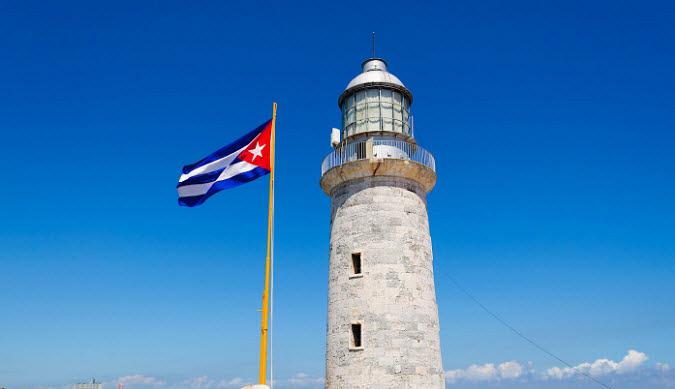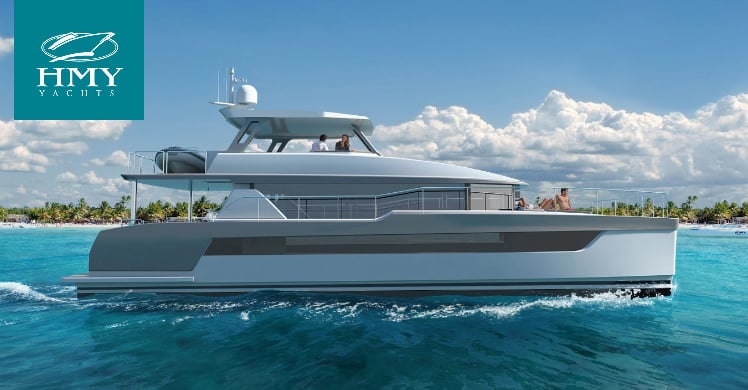
Cuba Travel Restrictions For American Yachts
Prior to the 1960's, the Caribbean island of Cuba enjoyed a robust tourism industry but in 1962 there was a major shift when the United States executed a severe trade embargo against the Communist country. The Blockade, as it is known, was established after Cuba nationalized American owned oil refineries without compensation. As part of this half a century old ban, travel to Cuba by Americans has been greatly restricted. More specifically, it’s theoretically illegal for U.S. citizens to partake in transactions (spend money or receive gifts) in Cuba under most circumstances. But recently, travel restrictions have been changing and with its close proximity to America, especially Florida, Cuba presents an excellent opportunity for yachtsmen to expand their cruising horizons.

Cuba's considerably large size results in over 2,000 nautical miles of stunning coastline, almost 4,000 islands and cays, 200 sheltered bays of which 81 are unique pocket bays. Cuba also boasts spectacular white sandy beaches, hundreds of miles of pristine coral reefs and an extotic, historic atmosphere. While improved relations and eased US regulations on traveling to Cuba have certainly made the island much more accessible to Americans, the guidelines by which you much adhere to for a successful trip can be a little confusing. We have compiled everything you need to know about taking your American vessel to this promising yachting destination.
What You Need to Know
For any boat or yacht that falls under U.S. jurisdiction (U.S. flag, American owner, American beneficial owner, or even one American crew or guest), all those onboard the vessel need to decide how their travel will fit into the legal framework of the 12 categories of the general travel license. The categories included the following: Family visits; official business of the U.S. government, foreign governments, and certain intergovernmental organizations; journalistic activity; professional research and professional meetings; educational activities including people-to-people activities; religious activities; public performances, clinics, workshops, athletic and other competitions, and exhibitions; support for the Cuban people; humanitarian projects; activities of private foundations or research or educational institutes; exportation, importation, or transmission of information or information materials; and certain authorized export transactions. These authorized reasons to travel are highly specific so very few Americans will qualify for 11 of the 12 categories. However, people-to-people travel, which is part of the educational activities category, allows any American to legally travel to Cuba, provided they engage in a full-time schedule of activities. A general license is self regulated and self policed from the get-go, but do prepare to prove that as US Citizen, you traveled under those conditions up to five years afterwards in case you are questioned by the U.S. government.

Once you have decided on a category and created an itinerary, fill out U.S. Coast Guard form 3300, Permit to Enter Cuban Territorial Waters, for permission to go. Approval of the two-page form takes about 10 days. The only potential issue in that process arises if someone needs to be added to the list of passengers or crew. In that case, the process starts over. Requirements on the Cuban side of the arrangements consist of a tourist visa, which is given upon arrival, whether on a yacht or private aircraft; a passport that must still be valid for six more months; and proof of health insurance, or the purchase of temporary Cuban health insurance for about $6 a day. Note that your crew will fall into a slightly different category. As workers on the yacht, they are not allowed to leave the vessel. But in the same token, vessels aren't allowed to keep crew onboard for extended periods without time off. As a general rule of thumb, crew is not allowed to be "tourists" in Cuba so they'll have to forego certain activities like going to the beach or surfing, for example. But, the crew is allowed to leave the yacht on official boat business which includes escorting guests.

Though yachts technically can anchor in the port of Havana, they can’t use their tender, and there’s only one commercial launch. Tenders are not allowed along the entireity of the northern coast, but the restrictions are more flexible on the southern coast. Unless a yacht is able to secure dockage along the lone commercial dock used by the cruise ships, they don’t go into the port. There are no anchorage areas outside the port of Havana. Yachts can, however, anchor outside marinas in other places around Cuba, just not Havana.
Ultimately, the easing restrictions on US travel to Cuba will help to breathe life back into the boater's paradise that once was Cuba. It is likely that the boating industry as a whole will see a boost as more Americans are enticed to take their private yachts to Cuba to explore parts unknown and experience a step back in time. As long as you are sure to play it safe by following the travel guidelines, taking your American vessel over to Cuba will prove to be an unforgettable experience.
For further information on Cuba sancations, please click here.

